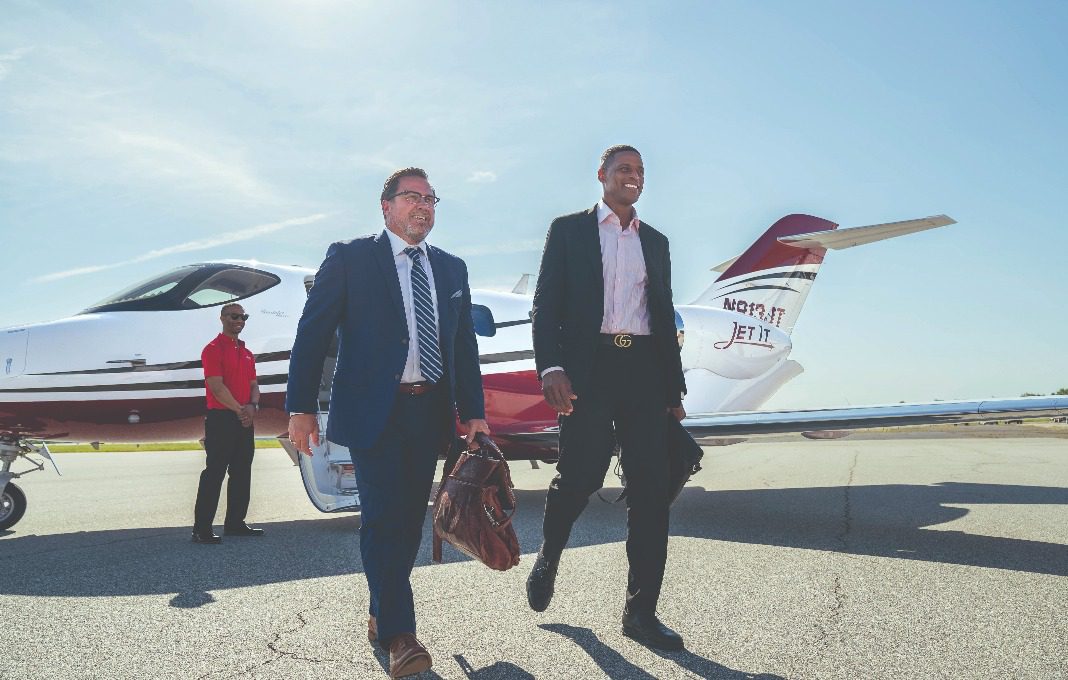Navigating The Jet Reset



Demand for charters, fractional ownership and jet cards has exploded to record levels as Covid waned—at a time when the supply of planes, pilots, flights and seats hasn’t nearly caught up. This gross imbalance ruined hopes for a smooth reascension of corporate aviation in the post-pandemic world. JetSuite filed for bankruptcy, while NetJets stopped selling new jet cards, helping create what’s been called “private-jet rage.”
“It’s hard to understate how ticked-off NetJets clients must be, or that Sentient jet-card customer who is underwriting depreciation on one of their planes but not able to get a ride on one,” says Greg Raiff, CEO of Private Jet Services, a New York City-based provider of chartered aviation to rock bands, sports teams and corporations.
With no slack capacity, the industry can’t cover flights cancelled when mechanical fixes are required. “I’ve never seen something marketed as so reliable and predictable take such a turn,” says Kyle Patel, executive director of charter provider BitLux.
And there’s no salvation on the supply side for planes. Gulfstream Aerospace, one of the biggest manufacturers, delivered only 127 jets in 2020, for example—and that was down by 16 percent from 2019 deliveries.
“But the good news is there are more options than ever before, both in terms of what the aircraft are and how to access them,” says Ed Bolen, president of the National Business Aviation Association. For CEOs, the challenge is navigating that ever-growing landscape of sharing options.
Volume of use is a good filter. The rough rule of thumb is that if you fly up to 50 hours a year, chartering is the most cost-effective option. From around 100 to 150 hours, it’s fractional ownership. Above 200 or more hours, experts say, the economics favor owning your own craft.
The main options:
• Chartering: It allows you to make use of a given plane for a specific trip without long-term commitments. Thousands of aircraft are available for charter. You don’t have to put up a large sum of money up front, and there are no ongoing monthly fees.
But it can get very expensive; high-demand times of year (such as spring breaks and winter holidays) may frustrate your plans; standards of service vary widely. Plus, of course, you’re ultimately at the mercy of others.
Fractional: You’re paying for part ownership of a specific plane and will be allocated time on the aircraft. Typically, the commitment is five years with an opt-out after three. Some companies offer shares based on days of use rather than hours of use.
But even in normal times, it may not be an immediate answer. “Most programs will pull you in, but right now they may not be able to put you on an airplane for three months as new planes come online,” says aviation lawyer David Norton. “They’ll interim-lease to you to bridge that gap.”
Jet cards: There are “closed-fleet” or fractional jet cards that give you access to some of the latest and best-maintained aircraft, typically for blocks of 25 prepaid hours. Also, several companies offer “open-fleet” or jet-charter cards, with their own aircraft or a fleet they manage. In typical times, jet-card holders can book with eight to 12 hours of notice on regular days.
Lower capital outlay—typically $25,000 to up to $100,000 up front—is required, compared with full fractional ownership. But the cost per flight hour is relatively high. And you need to give more notice than a fractional-share owner does, so when capacity crises hit, as now, jet-card holders can be some of the most frustrated travelers on the tarmac.
Here are some tips for navigating today’s challenging aviation-sharing options:
“Usually, I guide CEOs to five or six highly reputable companies that I know and say, ‘Why don’t you start here?’” says Craig Picken, managing partner of NorthStar Group aviation-executive search firm. “If you’re going to buy a jet card, for example, you’d better understand who you’re prepaying.”
NetJets, for example, is owned by Berkshire Hathaway, while Jet Aviation is owned by General Dynamics. Major new charter entrants include Wheels Up, which had a boffo IPO in 2021 and has seen active membership grow to around 12,000.
They can steer new customers through “self-serving mission analyses” proffered by sharing-options providers, says Mark Bloomer, cofounder of consultant JetTransactions, in Camarillo, California. “When we do those analyses, we’re a client-advocate company looking at what boxes this client fits into according to the mission.”
New entrants should thoroughly analyze their case for sharing planes. “Get a true assessment of what your actual needs are— personally, not just professionally and for your clients,” says Glenn Gonzales, CEO of charter operator Jet It in Greensboro, North Carolina.
The average booking time for a charter used to be about four hours, covering the time it took to recall a jet from somewhere, get it prepped and staffed, and have it available for takeoff again. Increasingly, that kind of instant availability is no more. So, set your schedule as far as possible in advance—up to a month.
Smaller, regional and local charter operations may be able to provide good old-fashioned service and the edge that can come from personal relationships. “Go back to the old school and call charter operators, at least to supplement whatever other arrangements you have,” says Janine Iannarelli, president of the Par Avion aircraft brokerage in Houston.
For example, in agreements for sharing options, indemnification clauses “can be weak and not in synch with the expectations of a company or its general counsel,” says Pawel Chudzicki, an aviation attorney. Sometimes, for instance, a provider’s insurance coverage is insufficient.
“I don’t know when it will happen, but what goes up must come down,” Raiff says. “I see the demand spike going on at least [until mid-2022], but at some point, demand will hit a wall.”


0

1:00 - 5:00 pm
Over 70% of Executives Surveyed Agree: Many Strategic Planning Efforts Lack Systematic Approach Tips for Enhancing Your Strategic Planning Process
Executives expressed frustration with their current strategic planning process. Issues include:
Steve Rutan and Denise Harrison have put together an afternoon workshop that will provide the tools you need to address these concerns. They have worked with hundreds of executives to develop a systematic approach that will enable your team to make better decisions during strategic planning. Steve and Denise will walk you through exercises for prioritizing your lists and steps that will reset and reinvigorate your process. This will be a hands-on workshop that will enable you to think about your business as you use the tools that are being presented. If you are ready for a Strategic Planning tune-up, select this workshop in your registration form. The additional fee of $695 will be added to your total.

2:00 - 5:00 pm
Female leaders face the same issues all leaders do, but they often face additional challenges too. In this peer session, we will facilitate a discussion of best practices and how to overcome common barriers to help women leaders be more effective within and outside their organizations.
Limited space available.

10:30 - 5:00 pm
General’s Retreat at Hermitage Golf Course
Sponsored by UBS
General’s Retreat, built in 1986 with architect Gary Roger Baird, has been voted the “Best Golf Course in Nashville” and is a “must play” when visiting the Nashville, Tennessee area. With the beautiful setting along the Cumberland River, golfers of all capabilities will thoroughly enjoy the golf, scenery and hospitality.
The golf outing fee includes transportation to and from the hotel, greens/cart fees, use of practice facilities, and boxed lunch. The bus will leave the hotel at 10:30 am for a noon shotgun start and return to the hotel after the cocktail reception following the completion of the round.